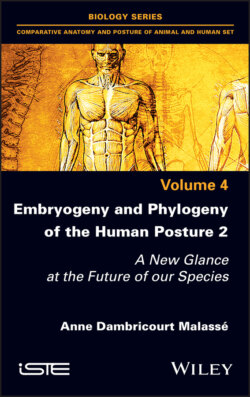Читать книгу Embryogeny and Phylogeny of the Human Posture 2 - Anne Dambricourt Malasse - Страница 25
2.7. The first study of the internal basis of a Hominidae fossil
ОглавлениеIn Java, the skulls of Pithecanthropus also started to accumulate. The German anthropologist Ralph von Koenigswald (1902–1982) participated in the excavations of the Geological Survey of the Dutch East Indies from 1931 to 1933, which focused on an ancient terrace of the Solo River at Ngandong. The collection included 11 skulls. In 1939, Weidenreich and Koenigswald met in Beijing to discuss the comparative anatomy of the fossils that constituted the largest collection of East Asian hominids, consisting of 17 almost complete craniums, 6 in Beijing and 11 in Java. The skulls presented a morphological unit that made it possible to consider them as being part of the same genus and species. Koenigwald suggested to keep the first name, Pithecanthropus. But no skull had preserved its base intact (Weidenreich 1937). No sphenoidal angle could be measured, and attention was focused on the most visible of the morphological evolutions. As is often the case, this was the most misleading link in the chain of causalities. These are obviously the cerebral hemispheres, or the hypertelic (excessive) development of the embryonic telencephalon. From this point on, anthropologists would consider telencephalization. As the skull base and the post-cranial skeleton were almost absent, the search for correlations with the spinal column was not contemplated. The sphenoid and the brain stem were left out, and embryogenesis was totally ignored. The study of hominization focused on the brain and adult technical intelligence without considering a physiological relationship with the cerebellum. The latter was reduced to the less noble functions of the unconscious control of postural balance.
Franz Weidenreich undertook a systematic study of the skulls of Sinanthropus by looking at the evolution of their base, comparing them with Homo sapiens and chimpanzees (Weidenreich 1943). The sphenoidal angle could not be measured on the fossils, since the anterior and middle brain fossae were missing in all the specimens. The angle was open in chimpanzees and closed in Homo sapiens. He suggested a geometrical reconstruction by referring to the position of several homologous cranial landmarks. On the external surface, he took the most anterior edge of the occipital great hole (basion) and the upper margin of the external auditory meatus (porion). On the internal surface, he took the internal auditory meatus, an aperture visible on the voluminous petrous pyramid that formed the anterior wall of the cerebellar fossa (Figure 2.3). What was the degree of straightening, or verticality, of the brain stem? Weidenreich had compared the position of these landmarks by orienting the skull on a line joining the root of the nose (nasion) to the furthest margin of the great occipital hole (opisthion). On Sinanthropus, the inner and external meatus are slightly above this line, whereas in Homo sapiens, they are much higher, with the anterior margin of the great occipital hole further forward.
He called this difference “deflection” and concluded that it was clearly more pronounced in Sinanthropus than in Paninae, but its sphenoidal angle should be more open than in Homo sapiens (Figure 2.2(A)). This difference between the late stages of growth in Sinanthropus and Homo sapiens corresponds to a lesser verticalization of the clivus and cerebellar surface of the pyramids. Then, by comparing adult cranial profiles of the gorilla, Sinanthropus and Homo sapiens, he highlighted a transverse axis of rotation passing through the center of the base of the skull (Figure 2.2(B)), just in front of the external auditory meatus. The face and neurocranium seem to roll up around this axis, the circles narrowing and all tissues contracting in its axial center. Later, at the American Museum of Natural History in New York, which he joined in 1941, he compared the degree of inclination of the pyramids of a skull of Ngandong (Java) with the gorilla and Homo sapiens, and found a cerebellar face of the pyramids more upright, but less vertical as on the Sinanthropus (Weidenreich 1951).
Figure 2.2. A: Diagram comparing the sagittal profile of Sinanthropus III and Sapiens (b: bregma, ba: basion, i: inion, kl: klition, l: lambda, op: opistocranion, or: infra-orbital, po: porion) (Weidenreich 1943, plate LXVIII). B: The rolling-up of the skull around a transverse axis of rotation at skull base compared between the gorilla, the Sinanthropus and Homo sapiens (Weidenreich 1939) (photo credit: Library of Institut de Paléontologie Humaine). For a color version of this figure, see www.iste.co.uk/dambricourt/embryogeny.zip
Weidenreich interpreted this “deflection” by considering the general shape of the vault. The brain of Homo sapiens is more coiled in its occipital part, so he supposed that the increase of the cerebral hemispheres would have pushed the cerebellum, and thus the cerebellar fossa with its great occipital hole, forward and downward. Nothing is said about the sphenoid.
